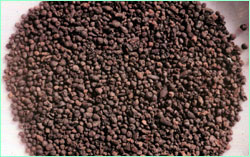
|
 |
 |
Part 3 | Back to Part 2 Hokkaido Jomon cultures continued during the Yayoi period long after the Jomon ended in southwestern Japan, but these continuing (or Epi-Jomon) sites developed a new character. Most sites consist of simple cemeteries with associated, apparently seasonal encampments. Inexplicably, only a few Epi-Jomon pit-houses have ever turned up. A migration of the Satsumon from Tohoku into Hokkaido seems to have brought an end to the Epi-Jomon. Indeed, the Satsumon culture appears to have developed out of the Tohoku Yayoi, though little is known of the archeology of this transition. By the time the Satsumon appeared, the Japanese in southwestern Japan were well on their way to establishing a nation-state. Satsumon material culture resembles that of these early state peoples, particularly the Nara and Heian regimes (A.D. 710-1192). Clearly, Ainu culture was far removed from the Jomon. How had this earlier characterization of the Ainu as hunters of the northern Japanese forests evolved? For one thing, few actually witnessed Ainu life before it was disrupted by Japanese colonization attempts, and those who did visit Ainu communities reported agriculture, but they generally assumed it to be a recent introduction by the Japanese, who had passed laws in the late 1800s requiring the Ainu to settle and take up agriculture. The government needed to take a census for taxation purposes, and men as hunters, women as farmers did not fit standard employment categories. So, by legislation, the government, in effect, deemed that men become farmers, even though, as our findings suggest, they had been farmers for some time.
Dr. Gary W. Crawford is a professor in the Department of Anthropology, University of Toronto, Canada. An archeologist specializing in palaeoethnobotany, the study of the relationships between plants and people in prehistory, he has conducted research in Japan since 1974. The author would like to thank Susan Rossi-Wilcox for her comments on earlier drafts of this article, and the following organizations for supporting his research: the Social Sciences and Humanities Research Council of Canada, Earthwatch, the Japan Association for the Advancement of Science, the University of Toronto, and Hokkaido University. Photos/images: (1-8) courtesy of Gary Crawford. Origins of the Ainu | Ainu Legends | Find Your Way Resources | Transcript | Site Map Editor's Picks | Previous Sites | Join Us/E-mail | TV/Web Schedule About NOVA | Teachers | Site Map | Shop | Jobs | Search | To print PBS Online | NOVA Online | WGBH © | Updated November 2000 |
 An Epi-Jomon pot.
An Epi-Jomon pot.
 A mass of millet (mixed grain) from a flotation
sample.
A mass of millet (mixed grain) from a flotation
sample.